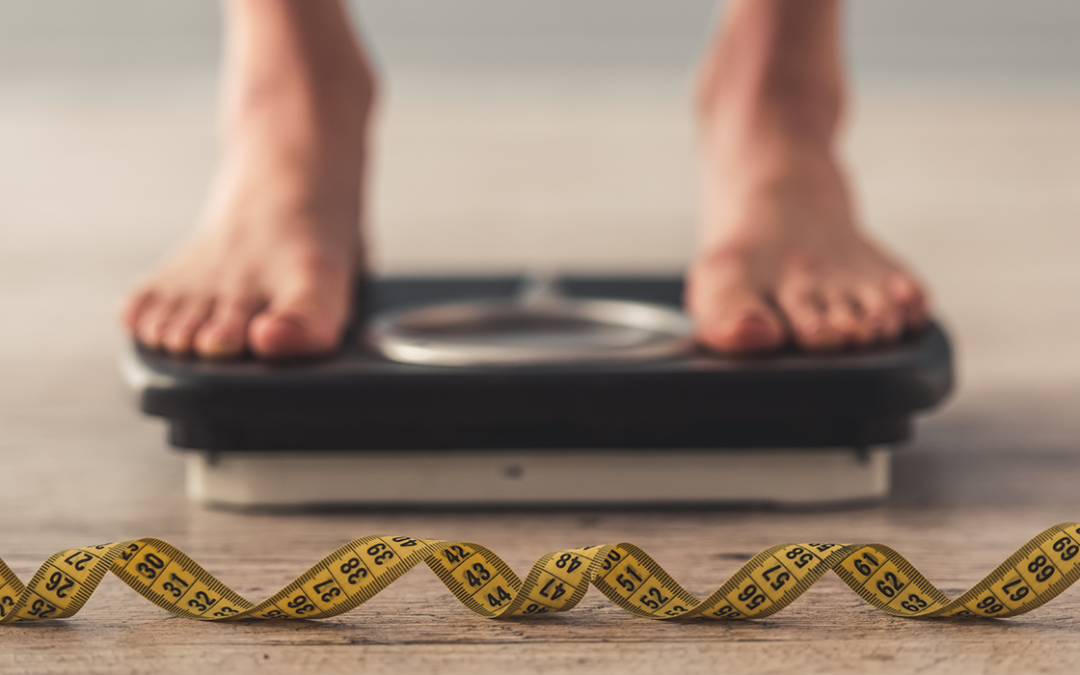When you’re on a weight-loss journey, there are a couple of metrics it’s easy to obsess over. These include the number of calories in food, the number you see on the scales, and the amount of time passed. In an ideal world, people want to see a lower number on the scales in a short amount of time.
But if there’s anything to learn about weight loss, it’s that the permanent changes are the ones that take the longest. Quick fix programs that see you restricting your intake and over-exerting on exercise might lead to a pretty rapid change on the scale, but they won’t last for long. It’s best to make realistic changes to your lifestyle to support your life at a lower weight in the long term, rather than going for quick fixes.
So while Google often gets asked ‘how to lose a stone in a week’ or ‘how to lose weight in 2 weeks’ the answers won’t help you to do this. In fact, most research shows that those who implement an overly restrictive diet are likely to put on more weight in the long term.
It’s a cycle that ensues. There is a reason why most people don’t attempt weight loss just once in their lives. We over exert and over restrict. We manage for a while. But then it gets too challenging to maintain. Life quality is suffering, and we resume old habits. The weight comes back. Often more than we might have weighed before. It’s just not working. What is needed is a realistic and sustainable approach to weight loss to get us to where we want to be. And keep us there.
So, whilst all this is interesting to hear. It doesn’t really help. Let’s look at the continually asked question ‘can you lose a stone in a month?’
Are you an employer? Hussle now offer flexible, discounted access to our fitness venues as an employee benefit. Elevate employee wellbeing.
How much is a stone in calories?
A quick look at the maths can help understand the reality of losing a certain weight. In 1 stone, there are 14 pounds. A pound equates to around 3,500 calories. That means that to lose a stone, you’d need to create a 49,000 calorie deficit in your diet over a period of time.
What that means is that against your maintenance calories, i.e. the number of calories you burn in a day through all your living, being and exercising, you’d need to eat less than this figure and create a consistent calorie deficit over a length of time that adds up to this 49,000.
If your deficit was 300 calories per day, it would take you 163 days to lose a stone. If it was 500 calories per day, it would take you 98 days to lose a stone. If your deficit was 800 calories per day, it would take you 61 days to lose a stone. You get the idea.
How can big should your daily calorie deficit be?
This is a complicated question to answer because, you guessed it, everyone is different. The size of calorie deficit you should apply to yourself per day to lose weight depends on several factors.
Your gender, your age, your current weight, and your activity level all come into play. The golden number is the one that allows you to create a deficit that you’re able to maintain across an extended period, without compromising on life quality, cutting out things you enjoy, impacting your social life, and without making you feel exhausted and weak.
Weight loss can be an important journey for some, but, at the end of the day, you’re worth much more than all of those consequences regardless of the number you see on the scales. Try not to forget that.
Understanding what makes up your maintenance calories is a good starting point. We’ve got a handy article that can help with that.
From there, it’s got to be trial and error. Diet and exercise are the two things you can control when it comes to weight loss. So figure out how much you need to eat, how much you’re able to exercise and what other bits of activity you can do in your day to create this deficit. You might get it wrong on the first go and need to scale it back. That’s okay. Keep learning.
So, can you lose a stone in one month?
To lose a stone in a month, you’d have to create a calorie deficit of 1,633 calories per day. Or 11,433 calories per week. That’s a lot. It’s pretty much impossible unless your current rate is exceptionally high and you’re willing to make extreme changes. It’s probably not a healthy approach to take.
However, a month is plenty of time to see some real change. But slow and steady wins the race. Losing weight is hard, don’t make it harder by entering the diet cycle. Be mindful of your calorie intake. Focus on healthy foods. Don’t stop eating the things you like. Be active every day. Prioritise exercise. With a bit of patience, the weight loss will start to happen.
However, keep in mind that many things can affect the number you see on the scale. Your weight may be different at different points of the day. Water weight might make you see higher numbers. Your weight might increase as you build muscle. The list is long.
So it might be worth focusing on fitting fitness in as part of a healthy balanced lifestyle. In time, you’ll see a body composition change that you can sustain and that you feel good achieving along the way.



